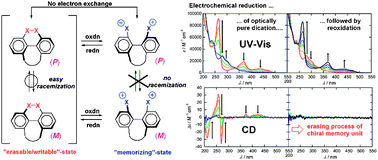Drastic change in racemization barrier upon redox reactions: novel chiral-memory units based on dynamic redox systems†
Abstract
The helical configuration of dication

* Corresponding authors
a
Department of Chemistry, Faculty of Science, Hokkaido University, Sapporo 060-0810, Japan
E-mail:
tak@sci.hokudai.ac.jp
Fax: +81 11 7062714
Tel: +81 11 7062714
b PRESTO, Japan Science and Technology Agency, Japan
The helical configuration of dication

 Please wait while we load your content...
Something went wrong. Try again?
Please wait while we load your content...
Something went wrong. Try again?
T. Suzuki, K. Wada, Y. Ishigaki, Y. Yoshimoto, E. Ohta, H. Kawai and K. Fujiwara, Chem. Commun., 2010, 46, 4100 DOI: 10.1039/C0CC00026D
To request permission to reproduce material from this article, please go to the Copyright Clearance Center request page.
If you are an author contributing to an RSC publication, you do not need to request permission provided correct acknowledgement is given.
If you are the author of this article, you do not need to request permission to reproduce figures and diagrams provided correct acknowledgement is given. If you want to reproduce the whole article in a third-party publication (excluding your thesis/dissertation for which permission is not required) please go to the Copyright Clearance Center request page.
Read more about how to correctly acknowledge RSC content.
 Fetching data from CrossRef.
Fetching data from CrossRef.
This may take some time to load.
Loading related content
